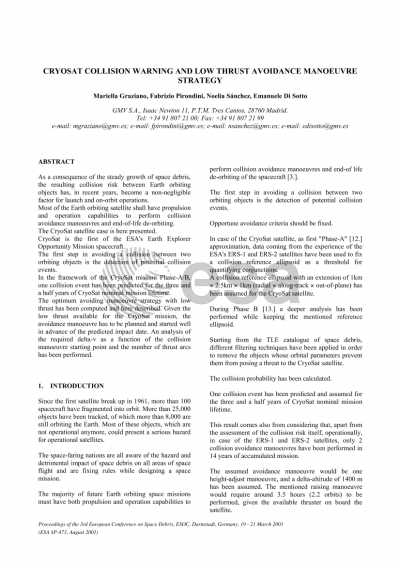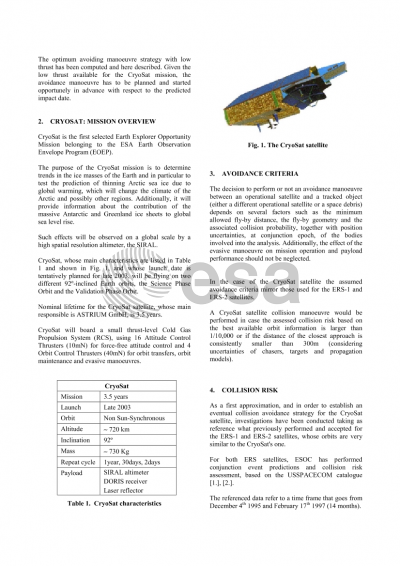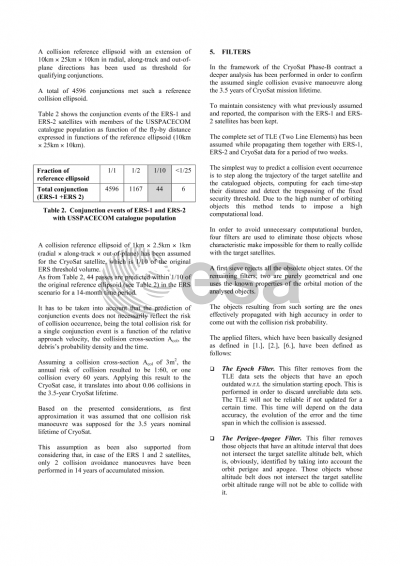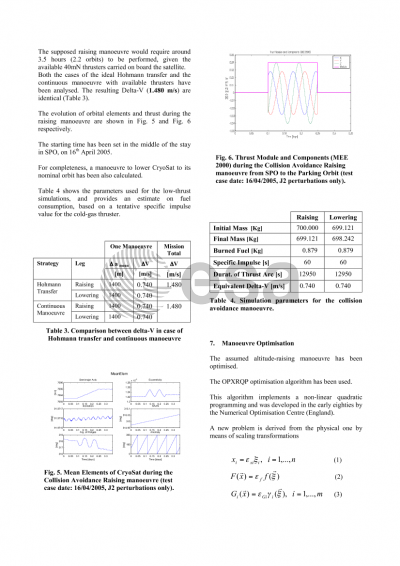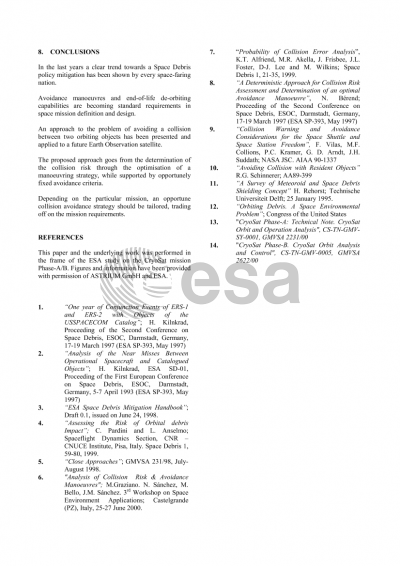Document details

Abstract
As a consequence of the steady growth of space debris, the resulting collision risk between Earth orbiting objects has, in recent years, become a non-negligible factor for launch and on-orbit operations. Most of the Earth orbiting satellite shall have propulsion and operation capabilities to perform collision avoidance manoeuvres and end-of-life de-orbiting. The CryoSat satellite case is here presented. CryoSat is the first of the ESA's Earth Explorer Opportunity Mission spacecraft. The first step in avoiding a collision between two orbiting objects is the detection of potential collision events. In the framework of the CryoSat mission Phase-A/B, one collision event has been predicted for the three and a half years of CryoSat nominal mission lifetime. The optimum avoiding manoeuvre strategy with low thrust has been computed and here described. Given the low thrust available for the CryoSat mission, the avoidance manoeuvre has to be planned and started well in advance of the predicted impact date. An analysis of the required delta-v as a function of the collision manoeuvre starting point and the number of thrust arcs has been performed.
Preview
